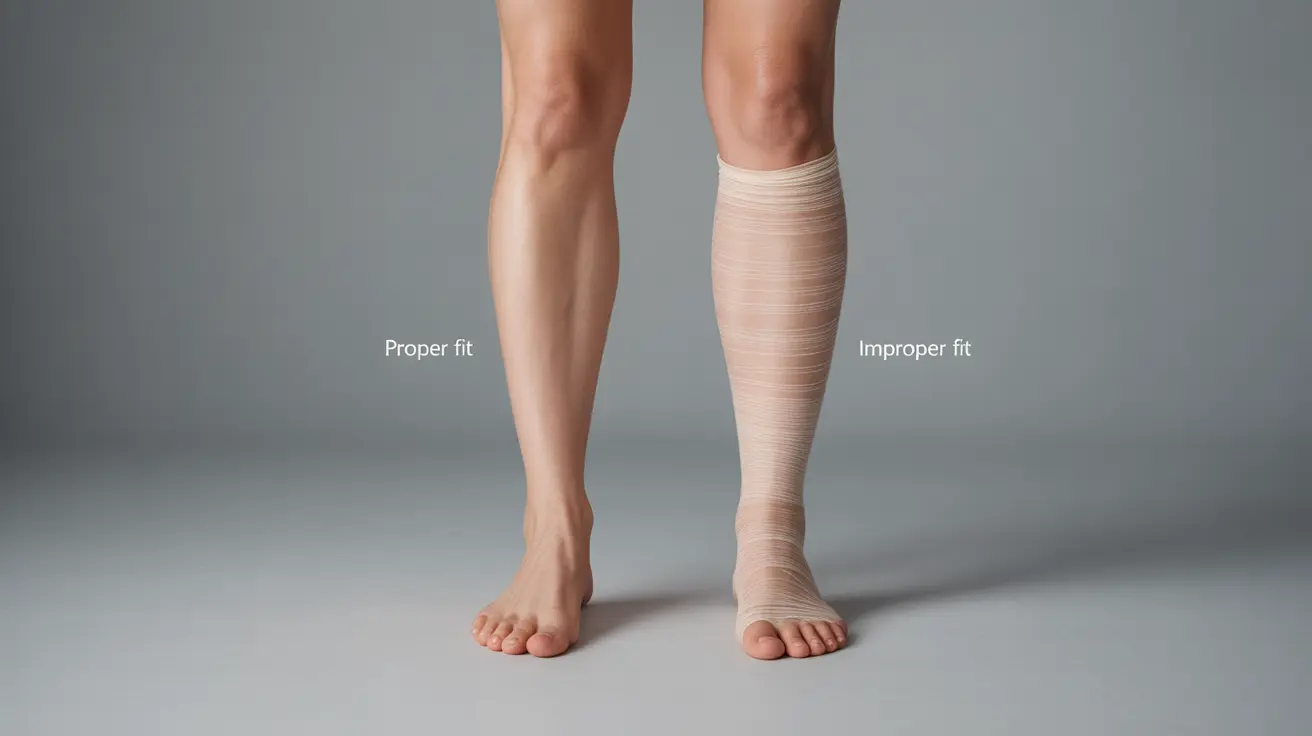Compression stockings are valuable medical devices that help improve blood circulation and prevent various vascular conditions. However, like any medical intervention, they can cause certain side effects when not used correctly. Understanding these potential complications is crucial for safe and effective use.
Whether you're wearing compression stockings for medical reasons or during travel, being aware of possible side effects and proper usage guidelines can help you avoid discomfort and ensure maximum benefits. Let's explore the common side effects and learn how to prevent them.
Common Side Effects and Complications
While compression stockings are generally safe, several side effects may occur, particularly when they're not fitted or worn properly:
- Skin irritation and discomfort
- Numbness or tingling sensations
- Marks or indentations on the skin
- Reduced blood flow if too tight
- Moisture-related skin issues
- Itching and warmth
Skin-Related Issues
The most frequent side effects involve skin reactions. These can include:
- Redness and inflammation
- Dry, flaky skin
- Chafing in sensitive areas
- Allergic reactions to fabric materials
- Bacterial or fungal growth in moist conditions
Proper Fitting and Usage Guidelines
Many side effects can be prevented by ensuring proper fit and following correct usage guidelines:
- Measure legs at specific points for accurate sizing
- Put stockings on first thing in the morning
- Ensure smooth application without wrinkles
- Replace stockings every 3-6 months
- Remove stockings before sleeping
Signs of Improper Fit
Watch for these indicators that your compression stockings don't fit correctly:
- Rolling or bunching at the top
- Excessive tightness around ankles
- Difficulty breathing or moving
- Pain or discomfort while wearing
- Visible skin discoloration
Risk Factors and Contraindications
Some individuals should avoid wearing compression stockings or consult their healthcare provider before use:
- People with peripheral arterial disease
- Those with severe diabetes
- Individuals with skin infections
- Patients with certain nerve conditions
- People with advanced heart failure
Prevention and Care Tips
To minimize side effects and maintain the effectiveness of compression stockings:
- Wash stockings daily according to instructions
- Apply moisturizer after removing stockings
- Keep skin clean and dry underneath
- Monitor skin condition regularly
- Take breaks if recommended by your healthcare provider
Frequently Asked Questions
What are the common side effects of wearing compression stockings?
Common side effects include skin irritation, numbness, marks on the skin, and potential moisture-related issues. These typically occur due to improper fitting or extended wear without proper care.
How can I prevent skin irritation or pain when using compression socks?
Prevent irritation by ensuring proper fit, keeping skin clean and dry, applying moisturizer after removal, and taking regular breaks as recommended by your healthcare provider.
Who should avoid wearing compression stockings due to health risks?
People with peripheral arterial disease, severe diabetes, skin infections, certain nerve conditions, and advanced heart failure should consult their healthcare provider before using compression stockings.
How do I know if my compression stockings fit properly to avoid complications?
Properly fitting compression stockings should feel snug but not painful, stay in place without rolling or bunching, and not cause skin discoloration or breathing difficulties.
Can wearing compression stockings cause infections or allergic reactions?
Yes, compression stockings can potentially cause infections if moisture becomes trapped, and some people may experience allergic reactions to the materials used. Proper hygiene and monitoring skin condition can help prevent these issues.




